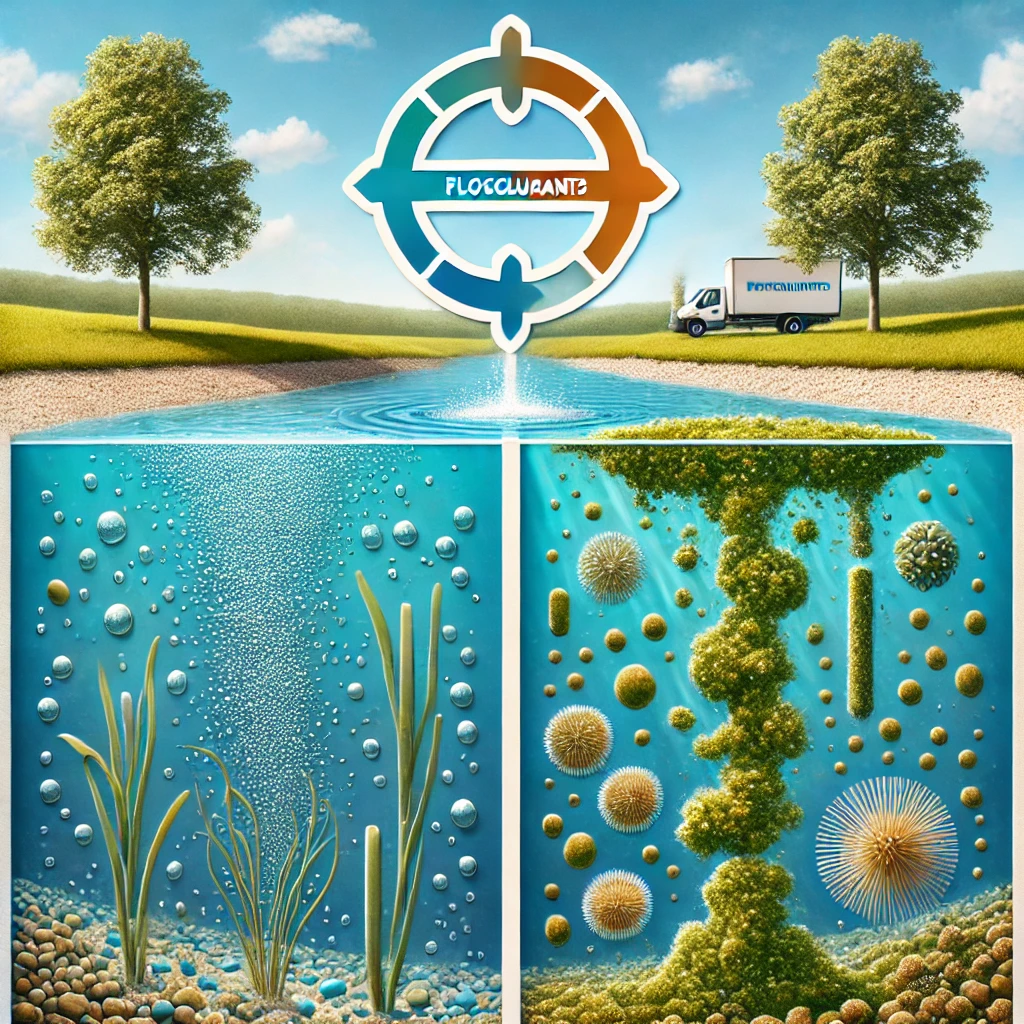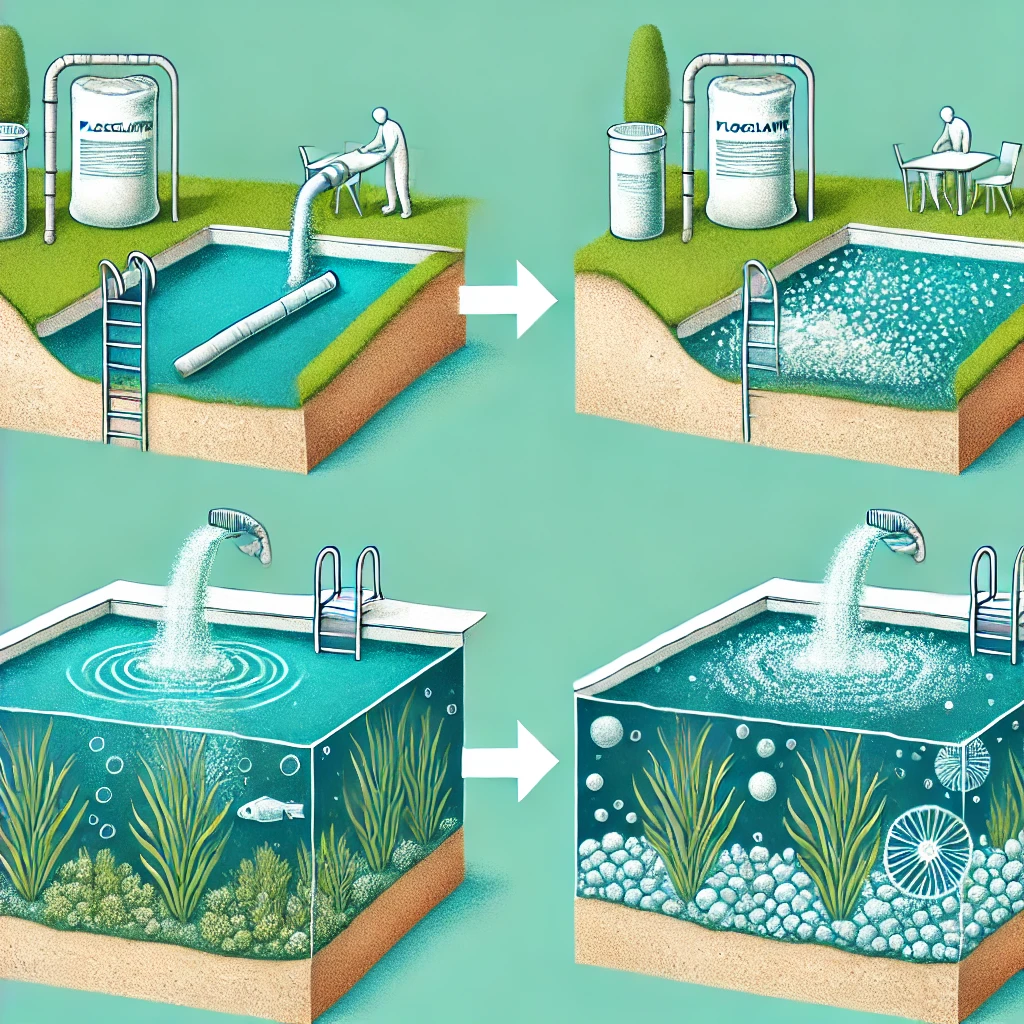Algae growth is a common issue in swimming pools, lakes, and other water bodies. It not only affects water clarity but also poses health risks. To tackle this problem, flocculants play a crucial role. Flocculation, a process that involves the aggregation of suspended particles, is an effective method for controlling algae. Understanding the role of flocculants in algae control can help maintain clear and safe water environments.

I. Understanding Flocculation
Flocculation is a water treatment process that clumps together suspended particles. These particles include dirt, organic matter, and algae. When flocculants are added to water, they attract and bind these particles into larger clumps, known as flocs. These flocs then settle at the bottom, making it easier to remove them through filtration or vacuuming. Flocculation is widely used in water treatment for its effectiveness in improving water clarity.
II. The Impact of Algae on Water Quality
Algae can quickly proliferate in water bodies, especially in warm, nutrient-rich environments. Algae growth leads to green, murky water that is unappealing and unsafe for swimming. Moreover, algae can produce toxins that harm aquatic life and pose health risks to humans. Algae also deplete oxygen levels in water, affecting fish and other aquatic organisms. Therefore, controlling algae is essential for maintaining healthy water ecosystems.
III. How Flocculants Help Control Algae
Flocculants are an effective tool in controlling algae. When algae are present, flocculants work by binding the algae cells together. This process causes the algae to aggregate into larger clumps, which are easier to remove from the water. By removing algae through flocculation, water clarity improves significantly. Flocculants do not kill algae directly, but they make it easier to manage algae levels by facilitating removal.
IV. Types of Flocculants Used in Algae Control
There are various types of flocculants used for algae control. Some of the most common include aluminum sulfate, polyaluminum chloride, and ferric chloride. These chemical flocculants are highly effective at binding particles. Natural flocculants, such as chitosan, are also used in some cases. The choice of flocculant depends on the specific water conditions and the type of algae present. Understanding the differences between these flocculants helps in selecting the most effective one for your needs.
V. The Process of Flocculation in Algae Control
The flocculation process begins with the addition of flocculants to the water. The flocculants disperse and start attracting suspended particles, including algae cells. These particles then clump together, forming flocs. Over time, these flocs grow larger and heavier, eventually settling at the bottom of the water body. Once settled, the flocs can be removed through vacuuming or filtration. This process not only clears the water but also reduces the overall algae population.
VI. Factors Affecting the Effectiveness of Flocculants
Several factors influence the effectiveness of flocculants in algae control. The pH level of the water is crucial, as it affects the chemical reaction of the flocculants. Ideally, the pH should be adjusted to the optimal range for the specific flocculant used. Water temperature also plays a role, with warmer temperatures generally enhancing flocculation. The dosage of flocculants is another important factor; too little may be ineffective, while too much can cause adverse effects. Regular monitoring and adjustments ensure the best results.
VII. Benefits of Using Flocculants in Algae Control
Using flocculants in algae control offers several benefits. First, flocculation significantly improves water clarity, making the water more visually appealing. Clear water is essential for swimming pools, recreational lakes, and drinking water reservoirs. Second, flocculants help reduce the need for harsh chemicals, such as algaecides, which can have negative environmental impacts. By facilitating the removal of algae, flocculants contribute to a healthier water environment.
VIII. Combining Flocculants with Other Algae Control Methods
Flocculants are most effective when used in combination with other algae control methods. Regular maintenance practices, such as brushing and vacuuming, help remove settled flocs. Algaecides can be used alongside flocculants to kill algae, ensuring more comprehensive control. Additionally, managing nutrient levels in the water, such as reducing phosphorus, can prevent algae growth. Combining flocculation with these methods enhances the overall effectiveness of algae control efforts.
IX. Potential Challenges and Considerations
While flocculation is effective, it is not without challenges. One potential issue is overuse of flocculants, which can lead to water imbalances. Excessive flocculants may cause cloudiness or affect water chemistry. Additionally, flocculants must be chosen carefully to avoid harming aquatic life. Some chemical flocculants can be toxic to fish and other organisms. Therefore, it’s important to follow recommended guidelines and consider the environmental impact when using flocculants.
X. Best Practices for Using Flocculants
To achieve the best results, it is important to follow best practices when using flocculants. Start by testing the water to determine the appropriate type and dosage of flocculant. Adjust the pH to the optimal level before application. After adding the flocculant, allow enough time for flocculation to occur before attempting to remove the flocs. Regular monitoring of water conditions and flocculant effectiveness is crucial for ongoing algae control. By adhering to these practices, you can maintain clear, algae-free water.

XI. Conclusion
In conclusion, flocculants play a vital role in controlling algae and maintaining water clarity. Through the process of flocculation, suspended algae particles are aggregated and removed, leading to clearer water. While flocculants alone may not eliminate algae, they are an essential part of an integrated algae control strategy. By understanding the role of flocculants and using them effectively, you can ensure a healthy and visually appealing water environment. Proper use of flocculants, combined with other control methods, offers a comprehensive approach to managing algae in various water bodies.
